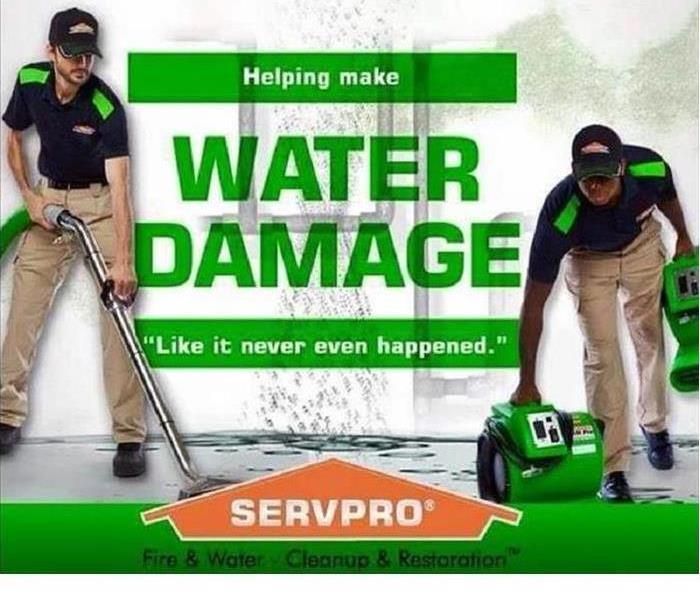What we do for you when water damage occurs?
2/15/2018 (Permalink)
 Call us at 903-832-4400 to help with water damage that may have occurred at your home or commercial location!
Call us at 903-832-4400 to help with water damage that may have occurred at your home or commercial location!
Do you want to know how we complete a water job? Here is a look at how!
We will attempt to “preserve and protect” your structure and contents. The following steps may be completed in the emergency service, as determined to be applicable by the Franchisee: Survey the Extent of Damage and Inspect the Premises: Our initial inspection of the premises is designed to identify how much damage has occurred and plan the necessary emergency work. The inspection is also done for safety reasons. We check the affected area for bad flooring, ceiling damage, visible electrical hazards, contents damage, wall and baseboard damage, sewage water, visible mold, etc. Are you aware of any potential safety hazards in the structure? Identify Source / Type of Water: Contaminated water sources (like sewage, etc.) require specialized restoration processes. Additionally, the source of water should be completely stopped prior to starting any work other than the removal process.
Source of water intrusion: Has the source of water been stopped? Identify Visible Mold Growth: It is important for us to know if visible mold growth is present. While molds may be found in small amounts almost anywhere, larger growths of mold may create health concerns depending on occupants’ reaction to mold. Have you seen signs of mold growing anywhere in the structure or its contents? Seen mold growth at any time in the past? Noticed any odors or musty smells? Specialized procedures are required for materials like mold, lead paint, asbestos, Chinese drywall, etc. If we notice a significant presence of these types of materials, or believe there is a likelihood that such materials exist in the structure, we will notify the involved parties so they may determine an appropriate course of action. Are you aware of any materials in the structure which might require specialized cleaning procedures (mold, lead paint, asbestos, Chinese drywall, etc.)?
Measure Temperature/Humidity for Drying Analysis: The process of drying will use equipment to remove moisture from the structure and contents of your home or place of business. This controlled reduction of the relative humidity level helps minimize property damage and slow mold growth. ? Emergency Water Extraction: Our next step is to remove as much water as possible from the affected area. This will be completed with our specialized extraction equipment. ? Furniture Moved and Blocked: This is done to protect carpet and furnishings in the affected area.
Floor Service: We will check to see what type of floors you have. Carpet will be lifted to inspect flooring. As much water as possible will be removed. Carpet Pad: Pad acts like a sponge and holds water. If the pad is exposed to excess water, it may be necessary to remove the pad to protect the subfloor and speed the drying process. Carpet: Carpet will be checked for restorability, delamination, visible mold and mildew, etc. In some water damage situations, the carpets may need to be removed. This can include door removal, cutting seams, and metal threshold removal.
Treatments: Our process may include the application of EPA-registered disinfectants. Equipment: Drying equipment will be used to dry your property. The equipment’s purpose is to remove excess moisture and bring relative humidity levels back to normal. It is important all equipment be kept running, unless a safety hazard arises. Excessive moisture can still be present even when all visible surfaces seem dry, which may lead to mold growth or other damage. We will monitor moisture in wet materials





 24/7 Emergency Service
24/7 Emergency Service